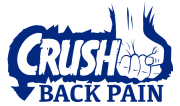Limit Lumbar Flexion
Herniated disc L4-L5 exercises to avoid involve one overall principle to understand. You must limit lumbar flexion. Repetitive flexion and end-range flexion need to be avoided.
What is lumbar flexion?
When you sit down and bend forward your lumbar spine flexes. It’s that simple. Avoid exercises that flex the spine repeatedly or flex the spine and hold it in a flexed position.
Pulling your knees to your chest is one of the first exercises you’ll see if you search for lower back or herniated disc exercises.
This will stretch the muscles in your lower back. It will also place compression load through the L4-L5 disc. Flexion and compression are what cause discs to herniate in the first place.
“But it feels good for a twenty or thirty minutes after I do this, so it must be good. I just need to do it more.”
Wrong
Yes, flexing the lumbar spine this way may temporarily reduce lower back pain. This is because the stretch receptors in the muscle spindles are stimulated. This does result in short-term pain relief.
The relief is not lasting though, and you’re actually replicating the exact motion and position that makes L4-L5 discs herniate.
Other common stretches that compromise a herniated disc include classic hamstring stretches, seated or standing. Bending forward and touching your toes or sitting and touching your toes. Quit doing these types of stretches.
What’s Wrong With Lumbar Flexion?
Stretches and exercise that flex the lumbar spine stretch the muscles along your lower back. This likely feels good, for a short period of time. Usually you get some pain relief for twenty or thirty minutes.
These stretches feel good because they stimulate the stretch receptors in the muscle fibers along your lower back. So you get some moderate short-term pain relief.
The problem is placing your back in flexion then holding that position increases the compression force through the back part of your discs. If you have a herniated disc in your lumbar spine it is herniated out the back and/or side. Your MRI likely uses the term “posterolateral” or “paracentral” disc herniation or bulging.
Stretching into lumbar flexion literally has the potential to increase the disc bulge
At the very least placing the spine in an end-range flexed position and holding it will keep a bulging or herniated disc from healing optimally. This is why when you stretch or exercise this way you feel better for a short period but the pain comes back.
Limit Lumbar Flexion to Facilitate Disc Healing
To allow the disc to heal and to reduce pain consistently, over the long term you need to limit lumbar flexion. You need to maintain the natural lumbar curve during stretching and exercising. Lumbar extension is almost always a better option compared to lumbar flexion if you have a disc herniation.
If you have been stretching and exercising into positions of lumbar flexion, take these movements out of your program. You’ll notice less lower back pain within a few days.
Herniated Disc Exercises to Avoid explains why you must avoid lumbar flexion oriented exercises in more detail. Examples of specific exercises to avoid are covered, along with exercises that are disc friendly.
For more videos that show you how to beat back pain subscribe to the Crush Back Pain channel.


